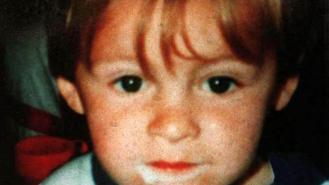
What drove James Bulger's young killers?
On 12th February 1993, Robert Thompson and Jon Venables kidnapped, tortured and killed two-year-old James Bulger in Liverpool. It was arguably the most shocking crime in modern British history; the toddler’s murderers were both just ten years old at the time.
The level of brutality involved in the sadistic killing was far beyond what anyone might imagine two primary school children to be capable of. Suffice to say that the word ‘evil’ is never far away from the names of Robert Thompson and Jon Venables.
But were these children, as so many have since hypothesised, born ‘evil’? Was their upbringing responsible? Or could, perhaps, other factors have been at play?
To find out what drove these two young children to such depravity, we must look, not only into the boys' backgrounds but also examine the wider issue of what motivates people in general - regardless of age - to carry out such abhorrent, deviant and wicked acts.
Does brain chemistry have a role to play, as well as contributions from various environmental factors? Can specific acts of physical or emotional trauma be enough to push a person to violence? Let’s explore what could have pushed Jamie Bulger's underage killers to the savage murder of the infant all those years ago.
Bullying and violence at home
For two children to do what they did, both Jon Venables and Robert Thompson must have been quite seriously disturbed. Few people would argue that point. Were environmental factors solely behind this disturbance? Was ‘nurture’ (or more accurately a lack of nurturing) a more dominant force here than ‘nature’? Were the duo shaped into monsters by their troubled upbringings? It seems the natural assumption.
Thompson saw his mother and siblings subjected to severe, physical and sexual violence at the hands of his father. He was also beaten and molested by the man. The bullying and violence continued after his father left, with the brothers turning on themselves. And Ann Thompson turning to alcohol.
Venables suffered no violence at home, though. And wasn’t known to have been bullied at school at any point. If anything, he was the one likely to bully others. For domestic violence to be the only or prime driver would require a narrative whereby Thompson was the ringleader who commanded Venables to obey him. And that’s a theory that doesn’t stand up to very much scrutiny at all.

Poor parenting
Quite obviously, overseeing a home environment in which physical, emotional, verbal and sexual violence is rife is bad parenting. Robert Thompson’s mother and father were patently not good parents. That much is clear. But Jon Venables’ background was seemingly free from the shocking and traumatic events that his friend Robert endured.
The Venables were by no means wealthy, but they were more financially comfortable than the Thompsons. Jon’s parents were estranged, but there was never a hint of abuse within the family. Jon did take the separation poorly, though. While his mother Susan suffered from psychiatric problems and would frequently complain of feeling ‘overwhelmed’ with parenting. When a child kills, we need to look at the parents for an explanation.
Post-trial, presiding judge Mr Justice Morland laid the responsibility very firmly at the feet of the parents. He called for a public debate about the wider ramifications of the crime and trial, saying that: 'The home background, upbringing, family circumstances, parental behaviour and relationships were needed in the public domain so that informed and worthwhile debate can take place for the public good in the case of grave crimes by young children.'
Psychopathy
A mental disorder where a person manifests completely amoral behaviour and a lack of ability to love or empathise, psychopathy is the root of many of history’s most infamous crimes. But can it explain the murder of James Bulger?
Despite commonly held beliefs, psychopathy is mostly determined genetically. The ‘nurture’ side can exacerbate the condition, but this abnormality of brain function is primarily an inherited, DNA-caused condition. That being the case, the chances of both boys suffering from it is minimal. However, it is perfectly possible for one of the boys to be afflicted with the disorder and to have manipulated the other.
The need for control or power
One of the overriding motives behind any great act of violence or murder is the urge to be able to effectively exert power and control over your environment. This is often given as a driver for serial killers from extremely abusive and chaotic backgrounds. Could this factor have been at play here?
Jon had a reputation for violence at school, often against younger children. Robert was regularly beaten by his older brothers, perhaps cementing an idea of age-based hierarchy when it comes to demonstrating power. Could the pair of them have sought out a younger boy in order to gain dominion over him?
Sexual gratification
Vicious murders can often be motivated by a sexual element. Some of the grislier details of the murder of Jamie Bulger may indicate this here to a lesser degree, but while that was a working theory of Merseyside Police for a time, it’s not widely believed to be a motivator now.
Jon Venables' psychiatrist, Dr. Susan Bailey, later reported that 'on visiting and revisiting the issue with Jon as a child, and now as an adolescent, he gives no account of any sexual element to the offence.'
Video nasties
After the murder, people wanted answers to the question we’re looking at here. Understandably so. How can two children commit such a brutal act against an innocent young boy? One theory was immediately put forward - horror films.
A term first coined in the 1980s when a swathe of violent horror films made their way into people’s homes via the exciting new medium of VHS, ‘video nasties’ made for a convenient scapegoat. The films - packed full of gore and explicit scenes of violence - easily sparked something of a moral panic the decade before. And when rumours spread that the boys had watched the slasher film Child’s Play 3, the debate was reignited.
Does watching simulated violence, or playing violent video games, actually cause violence, though? The evidence for it is limited to say the least. Most people can differentiate between fictional and real savagery, with some experts arguing that fantasy violence can actually relieve real-life urges. But in damaged children that are easily influenced? The evidence is even less clear. So what’s the ultimate answer here?
Unfortunately, there are no easy answers in cases like this. Or even tough answers, come to that. The reality is that the two ten-year-olds that lured, beat, tortured and murdered little Jamie Bulger back in February 1993 did so because of an uneasy and confusing mixture of ‘reasons’. Ones we’ll likely never fully understand or appreciate.











